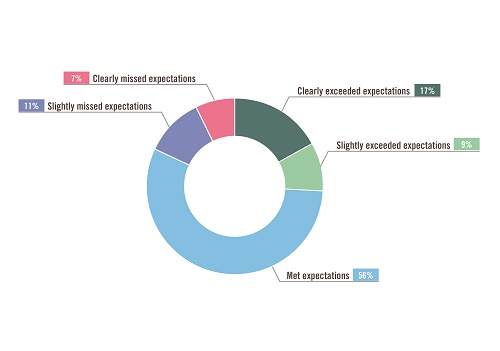A new report by Toniic, the global action community for impact investors, provides evidence and examples showing that portfolios are moving farther along the path to 100 percent impact.
T100: Powered Ascent is based on a longitudinal study of portfolios in Toniic’s 100% Impact Network of investors. These savvy “100%-ers”—educators, physicians, entrepreneurs, ex-hedge fund managers, artists and other self-made millionaires, inheritors, and trustees, some stewarding wealth that spans generations—have committed to moving an entire investment portfolio into 100 percent impact investments within five years.
The report is the second one tracking these portfolios, and it compiles data and perspectives from 76 private portfolios totaling $2.8 billion in committed capital. That represents a nearly 50 percent increase in participation compared with the 2016 Launch report, which surveyed 51 portfolios representing a total of $1.65 billion in committed capital. Overall, Toniic 100% Impact Investors’ portfolios total about $6 billion in committed capital.
“Why commit to 100 percent impact investments?” asked Annie Chen, one of the lead impact investors in Hong Kong quoted in the report. “To invest in the future we want to create. To protect the commons upon which all life depends. To demonstrate that capital can be deployed with a higher purpose beyond financial return.”
While the catalysts for committing to impact are unique to each investor, two common motives are to align investments with personal values and to make a positive contribution to humanity and the environment. “Capital should be invested to create a better world,” said Lisa Renstrom, a private impact investor from Washington, DC.
The 100%-ers in Toniic’s network are seeking impact not just in early-stage investments, but across their entire portfolio. On average, the portfolios in Powered Ascent are 75 percent invested for impact, up 11 percent from the Launch report, and 41 percent are almost completely (90 percent or more) invested for impact. And the investors’ commitment is being rewarded: 82 percent of T100 participants say their impact portfolios have met or exceeded their financial expectations, and 86 percent met or exceeded their impact expectations.
Focusing the Lens
Many investors are using a lens (a concentration on an area that is particularly important to the investor) to drive impact strategies and portfolio investment decisions. For example, Suzanne Biegel applies a gender lens to her investment strategy and to managing her portfolio. She began investing in women entrepreneurs 17 years ago. “I started looking at companies whose products and services affected women, and I didn’t put a big strategy around it, I just started doing it,” she said.
Biegel recently teamed up with Dr. Ruth Shaber, founder of the Tara Health Foundation, to challenge universities and colleges to apply a gender lens to their endowments. The foundation focuses on the health and well-being of women and girls – and its investments do too, using a variety of capital types, including equity, debt, grants, and others.
“Being able to bring a spectrum of capital with different impact and financial return expectations is going to bust things wide open,” Shaber said.
Linking Investments to Global Goals
Powered Ascent is the first report to map how deep impact portfolios are addressing the 17 UN Sustainable Development Goals (SDGs). While all SDGs are represented to some extent in the portfolios in the report, three SDGs make up over half of the reported impact goals:
- SDG 11: Sustainable Cities and Communities (29 percent)
- SDG 7: Affordable and Clean Energy (17 percent)
- SDG 17: Partnerships for the Goals (9 percent)
For example, Sherry and Jim Villanueva are active impact portfolio investors in SDG 11 in their Santa Barbara community and in early-stage enterprises in East Africa. They helped fund the creation of seven food and beverage businesses in a rundown section of Santa Barbara County, creating sustainable jobs for 260 residents.
Transforming the impact ecosystem
Impact investing is a transformative journey, and more investors than ever are committing to 100 percent impact. “I think we all have a heightened sense of urgency and responsibility, which is leading many impact investors to invest across a spectrum of newly defined risk and return parameters,” said Lisa Kleissner, co-founder of Toniic and the 100% Impact Network and editor-in-chief of the report.
The 100%-ers are also becoming more vocal about risks and returns and linking portfolio performance to social and environmental impact. “Impact is not a trade-off between doing good and increasing capital; it is a convergence between financial gain and social impact,” said 100%-er Bob Patillo.
The maturing 100 percent impact movement is becoming the new standard for impact investing, and Toniic believes the evidence in this report that 100% impact portfolios are feasible for a wide range of investors will increase the momentum.
Kristin Siegel leads the projects of the 100% Impact Network – a network of asset owners who have intentionally committed 100% of their assets to positive social and/or environmental impact. Kristin joined Toniic with a focus on the portfolio approach to impact investing as she has six years of global expertise in multi asset portfolio management and client advisory.


